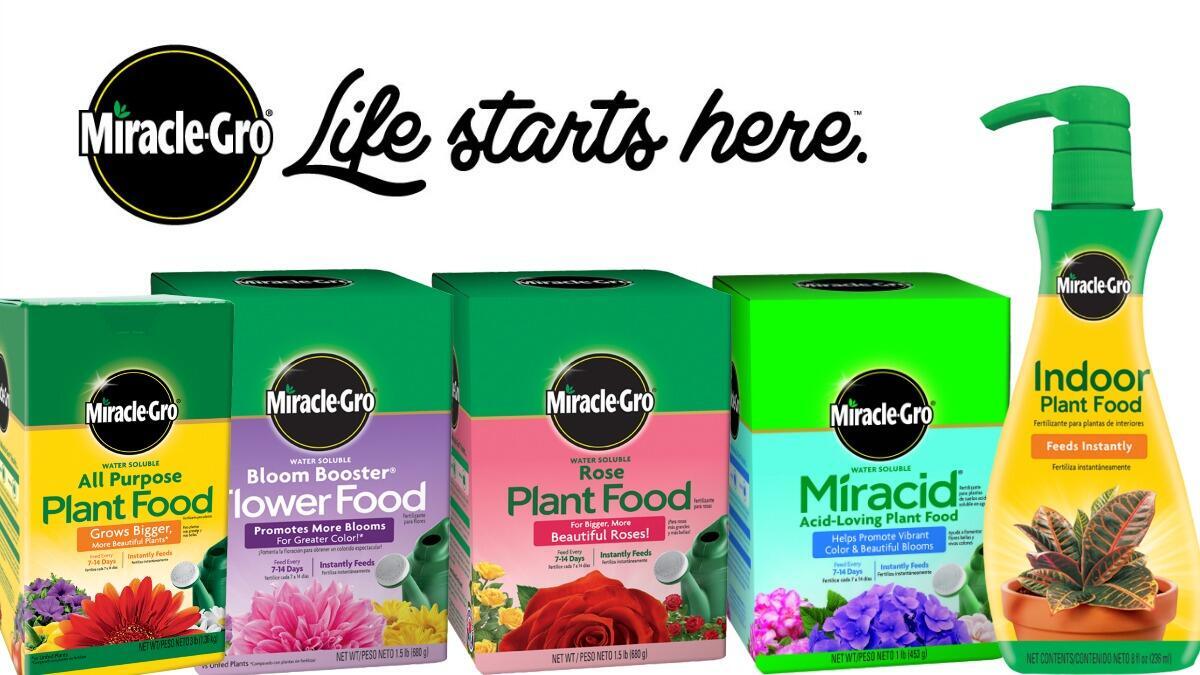Plant Food Basics
Learn about how plant food can help you get the most from your garden, including a big harvest.

It’s All About the Nutrients
Plant food delivers three main nutrients to plants:
- Nitrogen (N)-helps fuel growth
- Phosphorus (P)-promotes root development, increases blooms, and helps gets plants off to a strong start
- Potassium (K)-essential to overall plant health; helps plants fight off diseases and withstand stressful growing conditions (like drought and heat)
These three key nutrients appear somewhere on every plant food package as a series of numbers, such as the 12-4-8 found on Miracle-Gro® Shake ‘N Feed® All Purpose Plant Food. The first number, 12, refers to the percentage, by weight, of nitrogen (N) in the plant food. The second number, 4, refers to the percentage of phosphorus (P), and the last number, 8, refers to the percentage of potassium (K).
Plants also benefit from other nutrients, such as calcium and magnesium, which are included in many plant foods. If you look on the back of any fertilizer package, you’ll see a list of all the nutrients it contains.
Types of Plant Food

With liquid and water soluble fertilizers, the feeding happens when you water. Miracle-Gro® Water Soluble All Purpose Plant Food, for example, can either be added to the water in a watering can, or delivered through your garden hose. Miracle-Gro® Liquafeed® Universal Feeder attaches directly to the spigot, while Miracle-Gro® Garden Feeder attaches to your hose. These kinds of plant food needs to be applied more often than continuous release plant food, but the nutrients also reach plants far more quickly.
Feed Your Plants in Summer? Yes!
While some folks believe that you shouldn’t fertilize the garden in summertime, the opposite is actually true. After all, that’s when plants are growing most vigorously—think of them as ravenous teenagers. That doesn’t mean you should give them more food than the label says (that’s never a good idea), but it does mean that you’ll want to stick with a regular feeding schedule to make sure your plants are getting enough to eat.
No matter what kind of plant food you choose or what time of year you’re feeding, be sure to follow the directions on the label for the best results. Do that and your plants will never go hungry!




